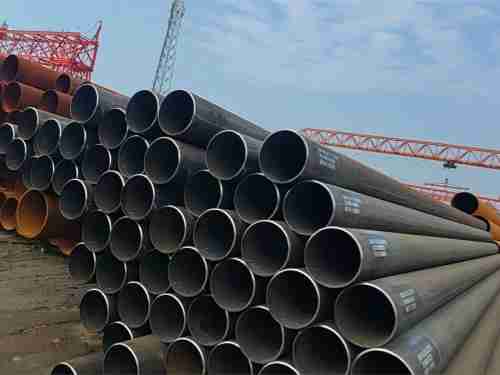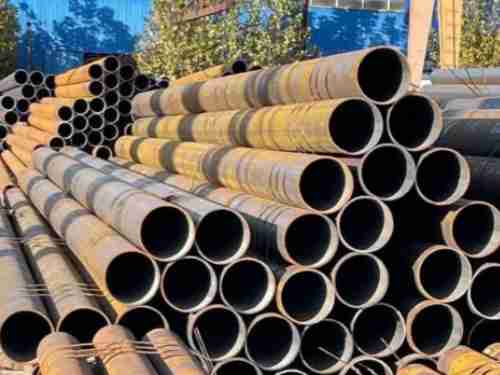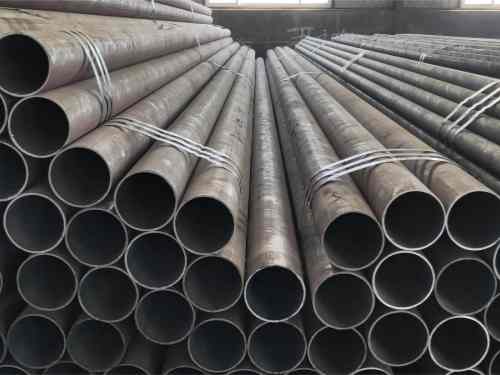When selecting piping materials for different applications, understanding the composition, performance, and suitability of iron pipes and carbon steel pipes is crucial. Although both types are primarily made of iron and carbon, their differences in composition lead to distinct properties and uses.
Composition of Iron Pipes and Carbon Steel Pipes
Iron pipes consist mainly of iron with a high carbon content. Depending on the form of graphite in the material, iron pipes can be classified into different types such as gray iron pipes, ductile iron pipes, and others. The carbon in gray iron pipes is present as flake graphite, whereas ductile iron pipes have spherical graphite, thanks to a special treatment process that enhances the material's mechanical properties. The composition of ductile iron pipes generally includes iron, carbon, silicon, manganese, sulfur, phosphorus, and magnesium.
Carbon steel pipes, on the other hand, have a lower carbon content, typically ranging from 0.0218% to 2.11%. To improve performance, small amounts of alloying elements like manganese and silicon are added. Some carbon steel pipes may also contain trace amounts of sulfur and phosphorus. Manganese enhances hardness, strength, and wear resistance, while silicon improves the pipe’s strength, toughness, corrosion, and heat resistance. High-performance carbon steel pipes may also include elements like copper, nickel, chromium, and molybdenum.
Performance Comparison of Iron Pipes and Carbon Steel Pipes
- Iron Pipes
Iron pipes are known for their high hardness, which enables them to withstand considerable pressure and impact. This makes them ideal for applications requiring heavy-duty support, such as foundation structures in large buildings. However, iron pipes have poor plasticity and toughness, making them susceptible to brittle fractures under external impact. Their welding performance is also subpar, requiring specialized welding processes and materials to prevent issues like cracks or pores. Additionally, iron pipes have weak corrosion resistance, making them prone to rusting in humid environments, which shortens their service life.
- Carbon Steel Pipes
Carbon steel pipes have excellent welding performance, allowing them to be easily connected to other components and form various structures and piping systems. Their corrosion resistance is generally good, especially for those with added alloy elements like chromium and nickel, which enhance their resistance to atmospheric, water, and chemical corrosion. In terms of mechanical properties, carbon steel pipes strike a good balance between strength and toughness, allowing them to withstand pressure and tension while being flexible enough to bend without breaking. This versatility makes them suitable for diverse engineering applications.
Application Comparison of Iron Pipes and Carbon Steel Pipes
- Iron Pipes
Due to their high hardness and wear resistance, iron pipes are commonly used for wear-resistant components such as mechanical parts, automotive parts, and agricultural machinery. Ductile iron pipes, with their good corrosion resistance and high strength, are widely used in water, oil, gas, and other pipeline systems. In the construction industry, iron pipes are often used for structural support, ceiling suspension, and fire protection systems, where they provide strength and stability.
- Carbon Steel Pipes
Carbon steel pipes are used in a broader range of industries due to their good welding capabilities and mechanical properties. They are commonly used in construction, petroleum, chemical, machinery manufacturing, and power generation sectors. In construction, carbon steel pipes serve as support materials for building frames. In the oil and gas industry, they are essential for transporting oil, natural gas, and other fluids. In the chemical industry, carbon steel pipes can transport chemicals and corrosive liquids, meeting the demand for corrosion resistance and high-pressure tolerance. In mechanical manufacturing, carbon steel pipes are used for parts like engine exhaust pipes, wheel hubs, and frames, meeting the necessary strength and toughness requirements.
Conclusion
There are distinct differences between iron pipes and carbon steel pipes in terms of composition, performance, and applications. Iron pipes, with their high carbon content, offer high hardness but suffer from poor plasticity, toughness, and welding capabilities, making them suitable for specific wear-resistant parts and certain pipeline systems. On the other hand, carbon steel pipes have lower carbon content, superior welding properties, and better corrosion resistance, making them more versatile and suitable for a wider range of applications across various industries. When choosing between the two, it’s important to consider the specific requirements of the application to select the appropriate material.

 English
English Español
Español











